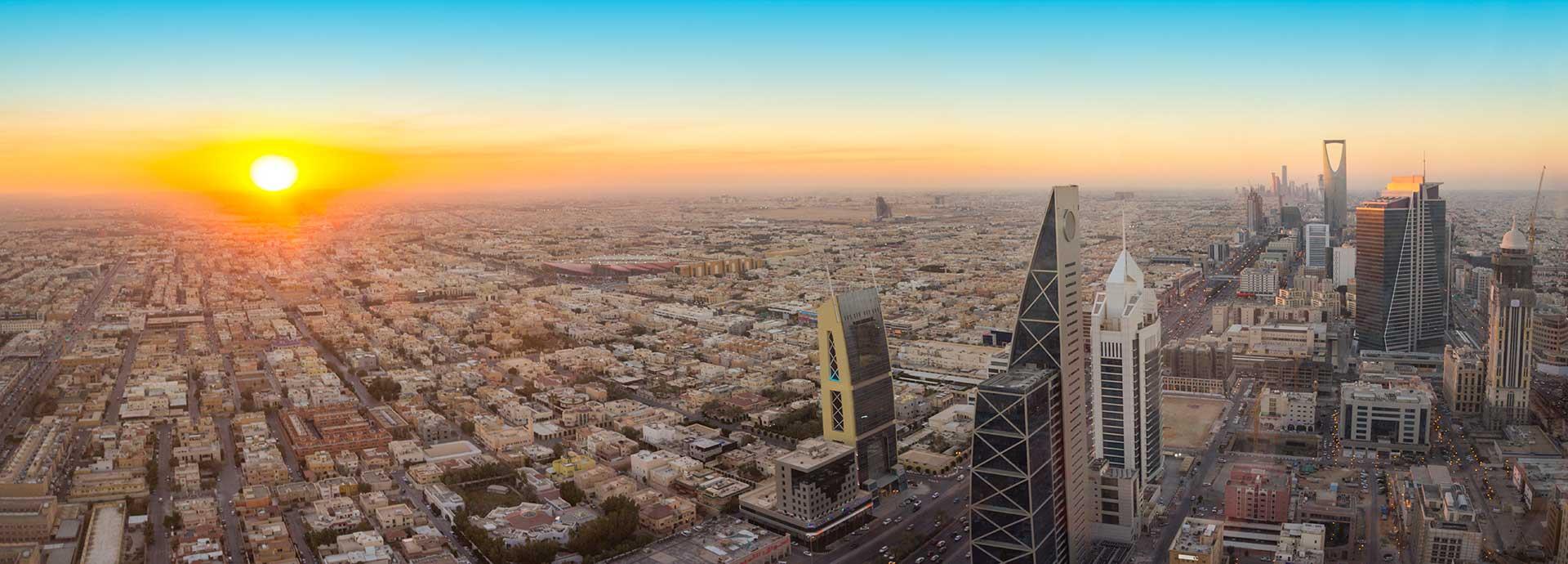

The world’s hub of oil & gas is betting on renewables. The UAE is estimated to invest USD 163 billion in renewables, by 2050, to meet 50% of its power needs. Saudi Arabia too will invest USD 50 billion, by 2023, to source 10% of its power needs from renewables. Here’s our analysis of what’s causing the switch in the Middle East.
The landscape of the Middle East, as the world knows it until now, is changing. Solar PV installations and wind turbines are fast becoming an integral part of the region. And there’s big money backing this change.
One of the big factors drawing these rich oil and gas nations to sustainable energy is the fact that crude oil prices have almost halved in the past decade from about USD 140 a barrel in 2008 to USD 69.41 a barrel as on 30 March, 2018. The other reason is that domestic consumption of power in the region has been rising exponentially.
Until recently many countries in the region were subsidising energy, which led to inefficiencies in the power sector like increased energy demand and wasteful consumption behaviour.
What you have as a result now, is a market ripe for transformation.
Simultaneously, the world is becoming increasingly conscious of lowering its carbon footprint. On one hand, many countries in the Middle East & North Africa region have joined hands and made big commitments in the Paris Climate Accord. On the other, the price of generating solar power, which seemed prohibitive a decade ago is falling globally. The Middle East region has now found itself in a sweet spot.
“For the oil and gas exporting countries, deploying renewables allows them to free significant quantities of valuable export resource from domestic consumption,” says Zoheir Hamedi, Regional Programme Office, International Renewable Energy Agency (IRENA).
“For the energy importers across the region, renewable energy greatly enhances energy security and energy independence. Moreover, the cost-competitiveness of renewable energy, which continues to strengthen, makes it the least-cost source of power generation in many parts of the world.
The switch
A case in point is the Kingdom of Saudi Arabia (KSA), which lifted subsidies in 2018. This had a direct impact on the energy-mix cost composition and made renewables seem like a viable option.
“The urge of having sustainable & efficient growth was the main driver towards diversifying energy resources. Like any new technology, the cost of renewable energy dropped severely in the past three years. From that perspective, KSA has taken careful steps before announcing the plan, which gives the country an advantage to get lucrative levelled cost of electricity (LCOE),” explains Sami Al Harbi, GM Business Development, Wärtsilä Energy Solutions (Saudi Arabia).
More than 1000-odd kilometres away, UAE also has mega plans to cut carbon dioxide emissions by 70 per cent and improve energy efficiency by 40 per cent by 2050. Last year, Dubai’s Mohammed bin Rashid Solar Park managed to secure a rate of USD 7.3 cents per KWh, for concentrated solar power making it a global benchmark in solar pricing.
Apart from falling technology prices, the region is naturally endowed to take advantage of renewable energy as it has vast tracts of uninhabited land. The Middle East & North Africa region (MENA) receives about a quarter of all solar energy that falls upon the earth! This is helping the region rethink its dependence on hydrocarbons.
Power to the people
“Energy rich Gulf governments seek to reconfigure their respective macro-economies and engage in economic diversification to transition away from being overly dependent on hydrocarbon production and exports. Investment in renewable energy production and renewable energy technology manufacturing are some of the most efficacious methods to stimulate technology/knowledge transfer and increase private sector employment opportunities for its youth,” explains Justin Dargin, Middle East Energy Expert at the University of Oxford.
Jobs are a big part of this change. According to IRENA, ‘renewables are increasingly seen as a tool for economic diversification and a job creator around the world, with nearly 10 million people working in renewables currently – a figure that could grow to 26 million by 2050. The Arab world is showing a desire to compete for a piece of that growth.’
But this growth is only possible by having the right partners who can help the region optimise its energy mix. And this is where Wärtsilä comes in.
A balanced approach
“With our Smart Power Generation and Energy Storage we can be part of the history that is being created in ME. We can support their strategy of transforming themselves into being sustainable economies using carbon free, flexible generation and can provide them a platform to integrate different energy resources, i.e. PV, Thermal generation, EVs, Energy Storage in the most optimum manner on an ongoing basis,” says Upma Koul, Sales Director, Wärtsilä Energy Solutions (UAE).
Experts say that energy storage will be a key driver in shaping the region’s future energy plans. That’s perhaps why large players like Dubai Electricity and Water Authority (DEWA) are investing in R&D and have test beds for battery-based energy storage.
With the cost of batteries expected to fall by up to 60 per cent by 2030, there are significant positive implications for the growth of the installed capacity in the Arab region. So while the Middle East region’s energy mix changes dramatically for the better, its economies will quite literally make hay while the sun shines.